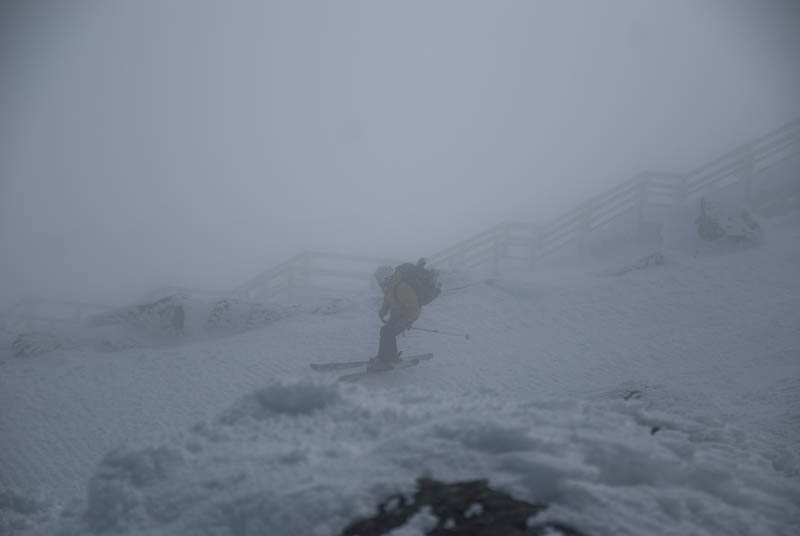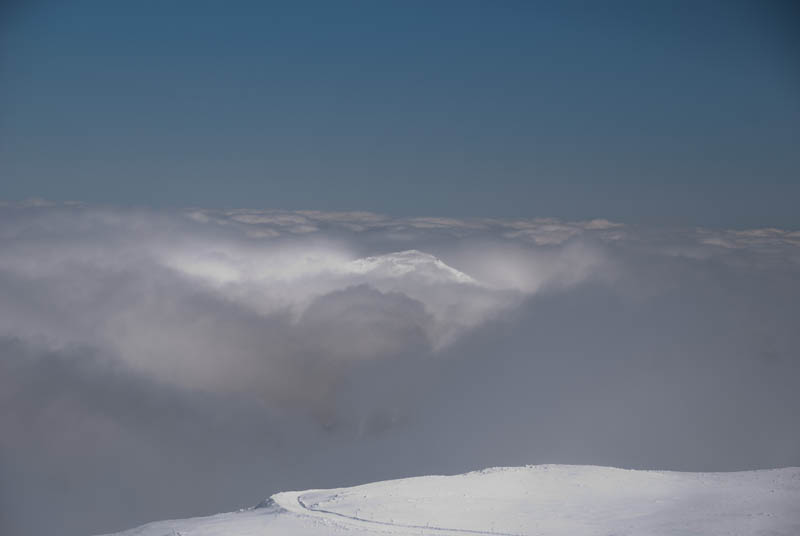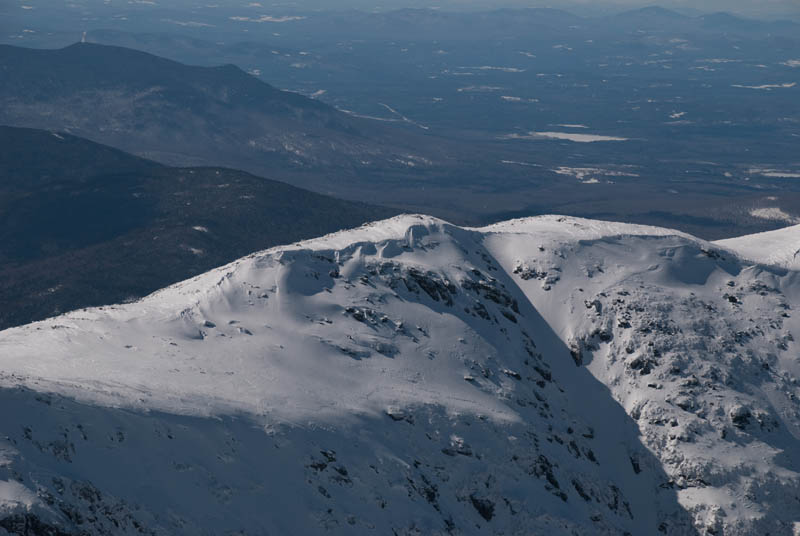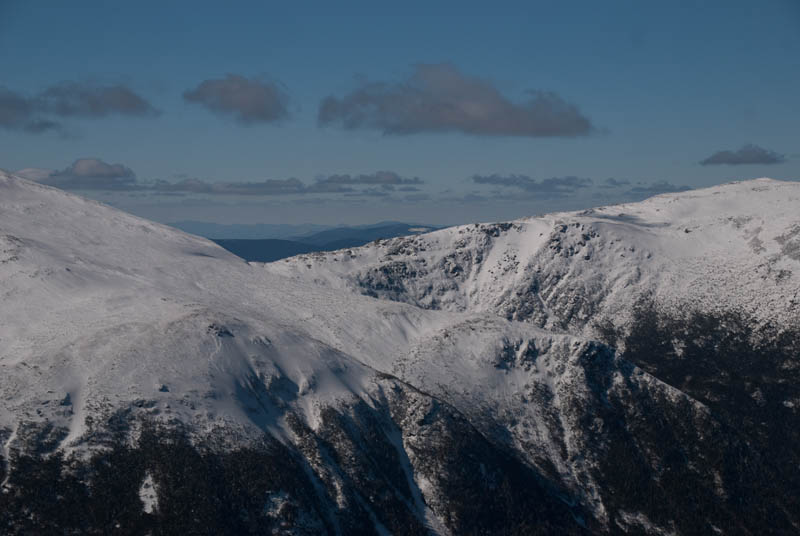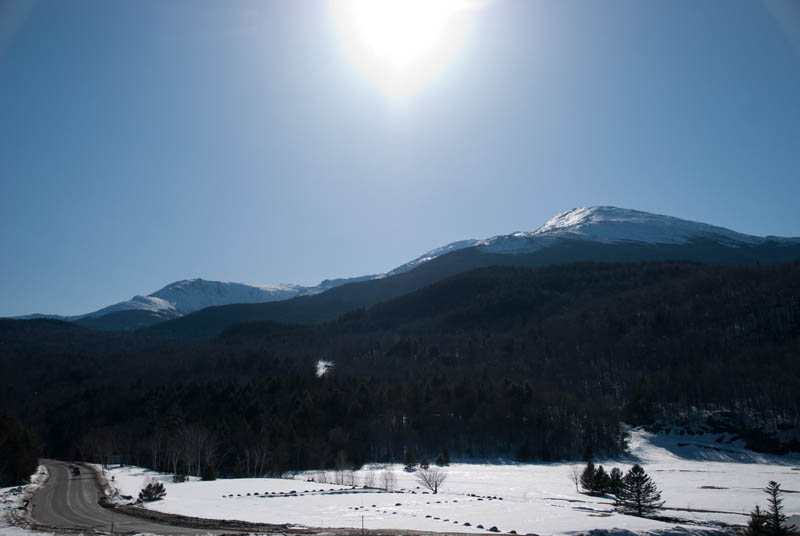All Things Must Pass...
One Way to Get Off the Mountain
Today was the end of my volunteer week on the summit of Mount Washington. Of course, the end comes with mixed emotions. Sad to be leaving my friends, old and new, but happy to be returning to wife, family and beloved dog. In the back of my mind I know I will return...
I do not have words eloquent enough to describe the experience, but perhaps these will do...
Excerpts from Nicholas Howe’s intense read: Not Without Peril
Chapter 14
The Summit As Home
“The Presidential Range is unique among the major mountains because the highest point has been an outpost of civilization from the earliest days. The first party to spend the night on the summit of Mount Washington went up in July 1784 and the mountain they climbed had been called, variously, Agiocochook, Waumbekket-methna, Christall Hill, and Trinity Heights. When they came down it was called Mount Washington, because the six climbers had gone up for a christening to honor the man who would soon lead the new nation.
The first shelter on the summit was a primitive stone hut built by Ethan Allen Crawford in 1823. In July of that summer a visitor spent an uncomfortable night in one of the Crawford’s stone huts, but found that the morning made up for it:
The Muses’ most inspired draught,
From Helicon’s pure fountain quaff’d –––
What is it to the rising sun,
Seen from the top of Washington!
Canst thou bear a dreary night?
Stranger! Go enjoy the sight!
Mount Adams Peeks Out of the Clouds
The huts did not keep out very much weather and visitors soon discovered that the summit of Mount Washington had a variety and a force of weather entirely beyond the experience of most mortals. An early commentator wrote that this stone cabin “was ever by the winter’s storms rendered a most desolate object, though sheltered behind a bold crag. The shingle roof, split down in the woods on the mountain side and packed up on the backs of men, was scattered to the four winds. The levers of the frost, and the wild hurricane, tumbled down the thick stone walls, and every spring a roofless heap of ruins, with a rusty old stove, and the iron chest, was left to tell a sad story of the invisible power that over these towering summits stretches the arm of destruction.”
The US Army Signal Service served as the national weather bureau and a detachment of soldiers set up an observatory on the summit of Mount Washington in November 1870, using a building with two heavy chains run up over the roof and anchored to bedrock.
Heavy and reassuring as the construction was, there were times when the men thought that it might not be enough. Consider, for instance, the experience of Private Doyle in January 1877. Night came on and the wind rose to 100 mph, driving sleet so thick the men dared not make their outside observations. At midnight they recorded winds of 120 mph and the thermometer stood at -24. The small building was heated with a coal stove and this night they stoked it until it was red hot, but water froze less than three feet from its glowing sides.
By one o’clock in the morning the wind touched 150 and blew through the sturdy building so freely that the carpet floated a foot above the floorboards. The remainder of the night was spent in an anxious state of mind, as was but natural when they did not know but that at any moment the building would be carried over into Tuckerman Ravine and they swept into eternity with it.
The Signal service recorded temps down to -59 and wind as high as 186 mph and they occupied the summit year-round until the fall of 1887 and summers only until 1892, when the government closed the observatory. The warm weather population remained strong, but year round occupants did not return until the International Polar Year was announced for 1933.
Cornice on Mount Clay
Joe Dodge led the campaign for a new weather observatory on the summit and four observers moved up in the fall of 1932, getting along as well as they could in the stage office. Thick accumulations of rime ice on the outside walls helped keep out the wintry blasts. A good thing, too because these observers recorded the all-time record for surface winds on the earth at 231 mph.”
Jefferson's Knee and Edmand's Col
After having spent the past eight days in relative comfort compared to the trials of these early pioneers, experiencing winds over 100 mph with windchills of 40 below, one can only look up to the men and women who still to this day occupy year round the summit of this mighty mountain. Although they now live in comfort they still go out on an hourly basis 24/ 7/ 365 to face the brutal winds, zero visibility and horrible cold to keep the tradition of weather observation here on the summit. We should hold these hardy individuals who provide the National Weather Bureau with vital statistics on a year round basis with high regard, and help them in any small way that we can! Consider a volunteer week here, you will not regret the experience!
Bye for Now!
KD Talbot- Summit Volunteer


